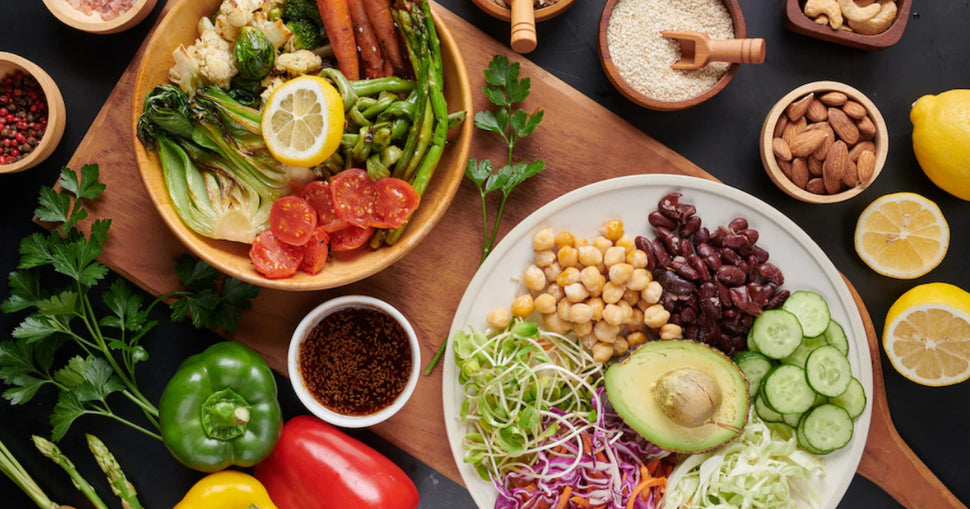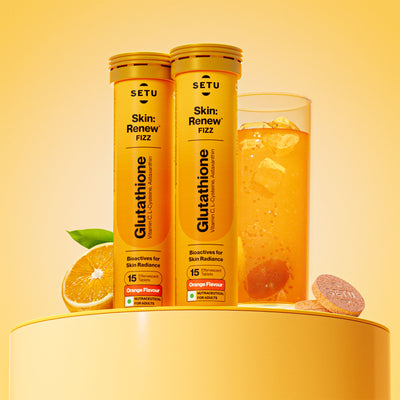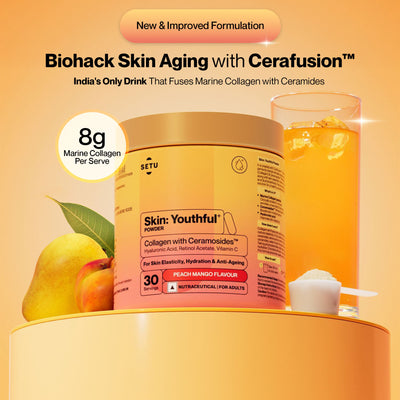High blood pressure? Here's what you can eat
24 Mar 2023
High blood pressure elevates the risk markers of heart and kidney diseases and stroke. This risk factor is however preventable. A majority of the population around the world is affected by hypertension or high blood pressure. A systolic blood pressure (SBP) reading of 130 mm Hg or higher and diastolic blood pressure (DBP) reading of higher than 80 mm Hg is considered high blood pressure levels.
Blood pressure levels can however be controlled with medications that convert angiotensin enzymes and bring them to healthy levels. Making dietary changes and lifestyle changes are also essential in addition to medications to keep the blood pressure levels from spiking and reduce the risk of developing cardiovascular issues.
Studies have shown that including specific high blood pressure foods in a balanced diet can help regulate blood pressure levels.
High Blood Pressure Foods To Be Included In Your Diet
Spare yourself from the risk of serious medical conditions like heart and kidney diseases, eye complications, metabolic syndrome, weak cognitive health and stroke by including the following best high blood pressure foods in your diet.
#1. Fatty Fish
Omega-3 fatty acids derived from salmon and other fatty fish play a pivotal role in controlling blood pressure levels and reducing the risk of cardiovascular issues. These fatty acids control blood pressure levels by reducing inflammation and oxylipin levels that constrict blood vessels.
Studies have associated the consumption of one of the best high blood pressure foods i.e., omega-3-rich fatty fish to lower blood pressure levels. It was also observed that people with good levels of omega-3 had significantly lower readings of SBP and DBP. Omega-3 intake also lowers the risk of hypertension.
#2. Pumpkin Seeds
Despite their small size, pumpkin seeds are incredibly nutritious. They are a powerhouse of nutrients that are crucial for regulating blood pressure levels such as potassium, magnesium, and arginine. Nitric oxide is essential for relaxing blood vessels and lowering blood pressure and arginine, an amino acid supports the generation of nitric oxide. Pumpkin seed oil is a potential treatment for high blood pressure. Women who consumed 3 gms of pumpkin seed oil daily for 6 weeks had significantly lower SBP.
#3. Beans and Lentils
Lentils are a great source of fibre, magnesium, and potassium, all of which are nutrients that help control blood pressure. Research has shown that eating beans and lentils may help lower high blood pressure levels. Further research has shown that beans and lentils significantly lowered SBP and average blood pressure in adults irrespective of whether they had hypertension or not.
#4. Citrus Fruits
Citrus fruits, such as grapefruit, oranges, and lemons, may significantly reduce blood pressure. They include a wealth of nutrients, including vitamins, minerals, and plant chemicals, which may protect your heart by lowering risk factors for heart disease, such as high blood pressure.
Extended studies conducted established a link between the consistent consumption of lemon juice combined with walking and reduced SBP levels. This benefit was attributed to the citric acid and flavonoids present in lemons. Similarly, the consumption of orange and grapefruit juice has also been shown to have reduced blood pressure levels.
It is suggested to exercise caution before including grapes or grape juice in your diet as it may interact with certain medications prescribed for lowering blood pressure levels.
#5. Carrots
Most people love the crunchy and sweet taste of carrots. This is the reason that carrots are a staple vegetable in many people’s diets. They are rich in phenolic substances like p-coumaric, chlorogenic and caffeic acids that help lower blood pressure levels by relaxing blood vessels and reducing inflammation.
Both raw and cooked carrots taste delicious, but raw carrots are more effective in lowering high blood pressure levels. However, carrot juice when consumed regularly helps in reducing SBP but not DBP.
#6. Beetroot and Beetroot Products
Beetroot and beetroot products are extremely nutrient-dense and have impressive health benefits including supporting normal blood pressure levels. They are loaded with nitrates which might help blood vessels relax and also reduce blood pressure. Including beetroot and beetroot products in your diet may support normal blood pressure levels. Studies have shown that beetroot juice is more effective in lowering blood pressure levels than cooked beetroot.
#7. Chia and Flax Seeds
Chia and flax seeds, though tiny, are rich in fibre, potassium, and magnesium, all of which are necessary for maintaining optimal blood pressure regulation. Whether you are on medication for blood pressure or not you can benefit by consuming about 35 grams of chia seed flour every day. Also, flax seeds when consumed in their whole form for a minimum of 12 weeks may be effective in lowering blood pressure levels.
#8. Broccoli
It is a well-known fact that broccoli provides an array of health benefits including supporting a healthy circulatory system. It would be wise to incorporate this vegetable in your diet if you intend to bring your blood pressure to normal levels. Broccoli is rich in flavonoid antioxidants that help in reducing blood pressure levels by supporting blood vessel function and enhancing the nitric oxide levels in the body.
#9. Spinach
Spinach is nitrate-rich and is loaded with antioxidants, potassium, calcium, and magnesium which makes it a fantastic option to bring blood pressure to normal levels. Spinach reduces arterial stiffness which could lower blood pressure levels and enhance heart health.
Conclusion
A healthy diet is key to considerably lowering blood pressure levels. Combining a healthy diet with some lifestyle changes can significantly help in regulating blood pressure levels and reduce the chance of developing serious medical conditions associated with high blood pressure levels.
Incorporating high blood pressure foods such as leafy greens, berries, lentils, fatty fish, citrus fruits, carrots, etc may help achieve healthy blood pressure levels. Try including some of the foods mentioned in the article to keep your blood pressure at healthy levels.
FAQs
What are the possible health threats from high blood pressure levels?
You may be inclined towards the following health issues if your blood pressure levels are uncontrolled.
- Risk of heart attack and stroke
- Developing vision problems
- Developing sexual dysfunction
- Risk of hypertensive crisis
- Risk of kidney damage
How do I know that I have high blood pressure?
If you experience any of these symptoms, you should get your blood pressure levels checked.
- Giddiness
- Blurred vision
- Tiredness
- Bleeding in the nose
- Heart Palpitations
- Nausea
- Shortness of breath
What are the exercises to be avoided if blood pressure is high?
Strenuous exercises should be avoided if you have high blood pressure since they raise the risk of arterial rupture, heart attack, or stroke. You should avoid physical activities like Scuba diving, weight lifting, playing squash, skydiving, and sprinting.
How does walking help high blood pressure?
Brisk walking lowers systolic blood pressure by 4.11 mm Hg, diastolic blood pressure by 1.79 mm Hg and heart rate by 2.76 beats per minute.
What is a DASH diet and how does it help high blood pressure levels?
A healthy eating programme created to help treat or prevent high blood pressure is called the DASH diet. Foods high in potassium, calcium, and magnesium are part of the DASH diet. These nutrients aid in blood pressure regulation. Foods that are heavy in sodium, saturated fat, and added sugars are restricted in the diet.
Skin: Renew - Glutathione - Orange Flavour
- ₹1,994
- ₹1,994
-
₹2,600 - ( 23% OFF)
Categories
- Choosing a selection results in a full page refresh.
- Press the space key then arrow keys to make a selection.
this is the sidecart










